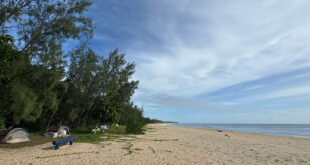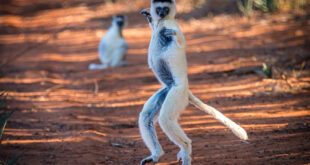The coronavirus (SARS-CoV-2, the abbreviation for severe acute respiratory syndrome coronavirus-2) has been keeping the whole world in suspense for more than two years. With the pandemic, travel to and in Madagascar had also been severely restricted. This page shows the current state of affairs on the island.
Can I travel to Madagascar again?
Last update: 21st October 2024
Yes! All airlines are currently flying to Madagascar again.
Are there current restrictions?
Last update: 23th March 2022
None! Travelling is possible again without restrictions. Since 11th August 2022, no PCR test and also no AG rapid test are required for entry into Madagascar.
The wearing of a mouth-nose mask is compulsory throughout Madagascar in airports, inside public vehicles (Taxibrousse, Taxi Be, cab), and in public facilities. However, the mask requirement is not checked, only in supermarkets and airports, you will be asked to do so. At least a one-meter distance to other persons is desired. The pandemic itself is not noticeable on the island anymore, apart from the increased number of disinfectant dispensers. Domestic flights are possible, rapid tests are no longer required. The Robert Koch Institute (RKI) does not currently consider Madagascar to be a virus variant area or a high-risk area. There is no longer a travel warning issued by the German Foreign Office. The Center for Disease Control and Prevention (CDC) currently classifies Madagascar as Level/Unknown and recommends full Covid vaccination prior to travel.
Note about Covid Organics
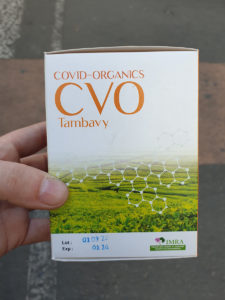
According to current studies and the World Health Organization (WHO), the much-praised drink from “Covid Organics” in Madagascar is not suitable for preventing corona infection or for alleviating the course of disease with Covid-19. It is mainly based on annual mugwort (Artemisia annua), a plant originating from Eurasia, being partly medically effective. However, the exact composition of the drink has not been published. From April 2020 to the end of 2021, the beverage was widely marketed and sold as an alleged remedy in Madagascar. Currently, there is only one tea variant still on the market.
Development of the pandemic in Madagascar
Due to its isolation as an island, Madagascar was able to maintain its status as a Covid-19-free country for a relatively long time. With the rapid international spread of the virus, however, Madagascar was also forced to take measures. On March 17, 2020, it was decreed that all airports in the country would be closed for 30 days from March 20th.
The first three cases of infection were promptly confirmed on March 20, 2020, in the capital Antananarivo. The three people affected had arrived in the country on one of the last planes that were to bring Malagasy people home from other countries. All other passengers on the flight, as well as those of all flights that had taken place up to 14 days earlier, were quarantined. However, about 20 people could not be found.
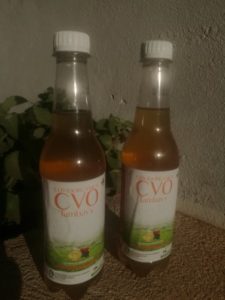
A lockdown was imposed on Antananarivo from 23rd March 2020, which was extended seven times until 06th September 2020. A nationwide mask obligation was introduced. No one was allowed to leave the region in which they were located. Only vital stores such as supermarkets and pharmacies were allowed to open. Churches, schools, nightclubs, bars, museums, and restaurants were closed. Taxibrousse and Taxi Be were no longer allowed to drive. Only one person per household was allowed to move outside the apartment once a day, exclusively between 6 a.m. and 12 noon. All schools were closed. The lockdown with further restrictions was later extended to Tomasina (Tamatave) on the east coast and Fianarantsoa in the southern highlands. Punishments for people caught outside their homes without masks made headlines: They were sentenced by the dozens to sweep streets and sidewalks. On March 23, 2020, a crisis management command centre was opened at the Ivato Mining Business Center. In Toamasina and Fianarantsoa, the lockdown was lifted after a few weeks. On August 26, the RN2 between Antananarivo and Toamasina was reopened for Taxibrousse, and Taxi Bes were allowed to drive within Antananarivo again.
Domestic flights were resumed under security arrangements on September 1st, 2020. Five days later, the lockdown of the regions Analamanga with the capital Antananarivo and Moramanga in the eastern highlands was lifted. The previously valid curfew from 10 p.m. until 4 a.m. was replaced by a curfew from 11 p.m. to 4 a.m. limited to the regions of Analamanga, Sava, Diana, and Boeny. The ban on assembly was raised from 50 to a maximum of 100 people. Museums, art galleries, bars and cinemas, churches, and schools were allowed to reopen with restrictions. In September 2020, RN7, RN4, and RN6 were reopened for Taxibrousse traffic. Until September 30th, international flights – except for cargo and evacuation flights – were not allowed to fly to Madagascar. On October 1st, the first plane from international areas landed again on the island. It was the first time in seven months.
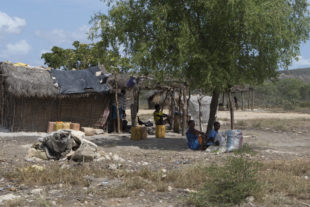
All regions of the country were affected by the pandemic. However, Madagascar had and has very little medical care. Hospitals are mainly located in large cities and only a few can keep up with international hygiene standards. In rural areas, there is often only absolutely basic care, if at all. The country was and is in no way prepared for a high number of respiratory patients. At the beginning of the pandemic, the few existing hospitals were accordingly quickly overburdened. As a result, some hospitals only accepted patients with the most severe courses of disease. There was a lack of gloves, mouth-nose covers, face shields, and everyday medical supplies. Additional protective equipment for hospital staff was flown in from abroad.
In August 2020, one of several new treatment centres opened at the Mahamasina football stadium in Antananarivo. Almost simultaneously, more than 1000 oxygen concentrators for hospitals arrived from abroad and another 2400 were still expected. On September 6th, 2020, the Malagasy president announced that the country had already overcome the pandemic during a speech. Three Covid19 treatment centres in Antananarivo were closed again.
The national state of health emergency was lifted on 18th October 2020. At the same time, however, entry into Madagascar was completely banned for citizens of countries undergoing a second Corona wave. From 01st October 2020 to 27th March 2021, Madagascar’s borders were briefly open, but only in parts. Only the island of Nosy Be in northwestern Madagascar with the international airport Fascene was allowed to be served by international flights. The opening of all of Madagascar to international flights, originally scheduled for October 29, 2020, was postponed until further notice.
As of January 2021, case numbers began to increase again. On March 20th, 2021, it was announced in a public speech by the president that the island of Nosy Be and the city of Mahajanga would be placed under a 14-day lockdown. Vaccinations against Covid-19 would not be offered to the population in the foreseeable future. Several high-ranking politicians flew to La Réunion to be vaccinated there. After protests, the government rowed back. Madagascar is now a member of the COVAX initiative of the World Health Organization (WHO). COVAX stands for “Covid-19 Vaccines global access”. On April 03, 2021, a renewed lockdown was announced for the regions of Analamanga (including the capital Antananarivo), Atsinanana, SAVA and Boeny, and the island of Nosy Be. In May, the first regions such as SAVA were reopened, while others were placed under lockdown. The same month, the first 500,000 vaccine doses arrived in Madagascar. In June 2021, the lockdown ended and numerous restriction loosenings were announced.
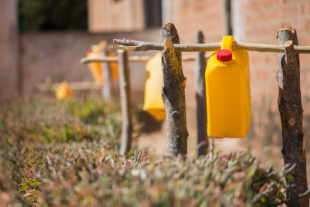
The test capacities in Madagascar were and are very limited. Even during the most intense times of the pandemic, only an estimated average of 80 tests per day could be performed nationwide. The official infection and death rates in Madagascar were not expected to reflect reality. Only those who had already tested positive and died in hospitals were counted – which was likely to be the absolute minority of those infected. There were no autopsies outside of the hospitals of deceased people. Those who died at home and were not tested did not fall into any statistics anyway.
However, Madagascar had and has a very young population due to the general poor medical care and high poverty. More than 60% of Madagascans are under 15 years old. Since children seem to be critically affected by the pandemic only in small numbers, it is assumed that the country has lower mortality rates for this reason as well. As of April 2021, Covid-19 treatment was free throughout Madagascar but only limited medicine was and is available at all.
The lack of foreign funds and tourism has significantly worsened the situation of national parks and protected areas in Madagascar during the pandemic. During the dry seasons, there were more slash-and-burn clearances and illegal deforestation than in previous years. People who otherwise lived from tourism were forced to switch to agriculture and self-sufficiency. As a result, not only forest areas but also the rare animals living in them are massively threatened. Many hotels and tour operators have gone out of business. The reopening of Madagascar’s borders was announced on October 13, 2021. However, there were mandatory quarantine measures and double PCR tests upon entry, which deterred the bulk of tourists from travelling to Madagascar. As of April 2022, there is no longer mandatory quarantine and the second PCR test has also been replaced by a rapid antigen test at the airport in Antananarivo. Rapid testing before domestic flights was lifted, too. In August 2022, PCR tests, rapid tests and quarantine for entry were generally abolished. Since then, things have been improving.
Protection measures in national parks and protected areas
Originally, far-reaching hygiene measures for both protected areas of private organizations and the official national parks in Madagascar were announced as early as 2020. In reality, however, none of this was being implemented, not even the mask requirement originally planned for every visit. However, because of the possibility of transmission of SARS coronavirus-2 to lemurs, we still strongly advise against visiting protected areas or getting close to lemurs after contact with sick people or when Covid19-like symptoms appear. Madagascar National Parks (MNP) currently registers visitors to national parks by name in some locations, and passports must be shown.
Title picture: © Achisatha, lizensiert bei AdobeStocks Measuring temperature & Covid-19 testing: © poco_bw, lizensiert bei AdobeStocks Tippy taps: © ivanfolio, lizensiert bei AdobeStocks
- Trafic aérien: Réouverture totale des frontières le 5 mars | Madagascar Tribune | 24.02.2022 | Auth or: R. Mandimbisoa
Ouverture des frontières prévue en Octobre| Midi Madagasikara | 26.08.2021 | Author: R. O.- Les frontières aériennes malgaches restent fermées | Madagascar Tribune | 08.07.2021 | Author: R. Mandimbisoa
- Jailed Madagascar Covid ‘miracle cure’ critic loses court appeal | France24 | 07.05.2021 | Author: Unknown
- Madagascar says vaccine to arrive in two weeks as virus flares | France24 | 23.04.2021 | Author: Unknown
- Madagascar turns schools into hospitals to cope with Covid surge| AfricaNews | 18.04.2021 | Author: Unknown
- Madagascar: La multiplication des cas de Covid-19 inquiète l’étudiants d’Antananarivo RFI | 24.01.2021 | Author: Laetita Bezain
- Madagascar takes last stand on Covid19 vaccine, refuses immunization AfricaNews | 27.11.2020 | Author: Michael Oduor
- Madagascar end state of health emergency AfricaNews | 20.10.2020 | Author: Afolake Oyinloye
- Madagascar reopens national parks shuttered by Covid-19 Mongabay | 17.09.2020 | Author: Rivonala Razafison
- Madagascar closes three Coronavirus treatment centers Yeni Safak | 24.08.2020 | Author: Unknown
- Madagascar president’s herbal tonic fails to halt Covid-19 spike BBC News | 14.08.2020 | Author: Raissa Ioussouf
- Profiting from Madagascar’s herbal ‘cure’ for Covid: the story behind artemisia RFI | 06.08.2020 | Author: Daniel Finnan
- Endangered and endemic: Madagascar’s lemurs susceptible to coronavirus infection Mongabay | 31.07.2020 | Author: Rivonala Razafison
- No evidence Madagascar herb cures Covid-19 Daily Trust | 19.07.2020 | Author: Ojoma Akor
- Madagascar experiments with ‘miracle cure’ as virus overwhelms hospitals The Telegraph | 30.06.2020 | Author: Will Brown
- Coronavirus: Madagascar hospitals ‘overwhelmed’ BBC News| 22.06.2020 | Author: Unknown
- Madagascar lawmakers die after contracting Coronavirus Al Jazeera| 13.06.2020 | Author: Unknown
- In Madagascar, citizen engagement brings practical solutions to issues related to Covid-19 World Bank Blog| 07.06.2020 | Author: Erick Rabemananoro
- Coronavirus disrupts global fight to save endangered species AP News| 06.06.2020 | Author: Christina Larson
- Two African leaders under fire for touting unproven Coronavirus preventatives RFI | 29.04.2020 | Autor: Unknown
- Madagascar: People without face masks forced to sweep streets Aljazeera | 27.04.2020 | Author: unknown
- Madagascar’s president promotes unproven herbal cure for Covid-19 Mongabay | 20.04.2020 | Author: Malavika Vyawahare
- Madagascar pupils expelled for refusing herbal covid-19 remedy distributed by president The Telegraph | 23.04.2020 | Author: Adrian Blomfield
- Covid-19 pandemic: Madagascar distributes controversial ‘miracle cure’ France24 | 23.04.2020 | Author: Georja Calvin-Smith, Tatiana Reiter
- Tourists’ departure leaves Madagascar forlorn as coronavirus fears bite Reuters| 20.03.2020 | Author: Anna Bellissens
- One-two punch of drought, pandemic hits Madagascar’s poor and its wildlife Mongabay | 12.03.2020 | Author: Malavika Vyawahare
 MADAMAGAZINE Your Magazine about Madagascar
MADAMAGAZINE Your Magazine about Madagascar

